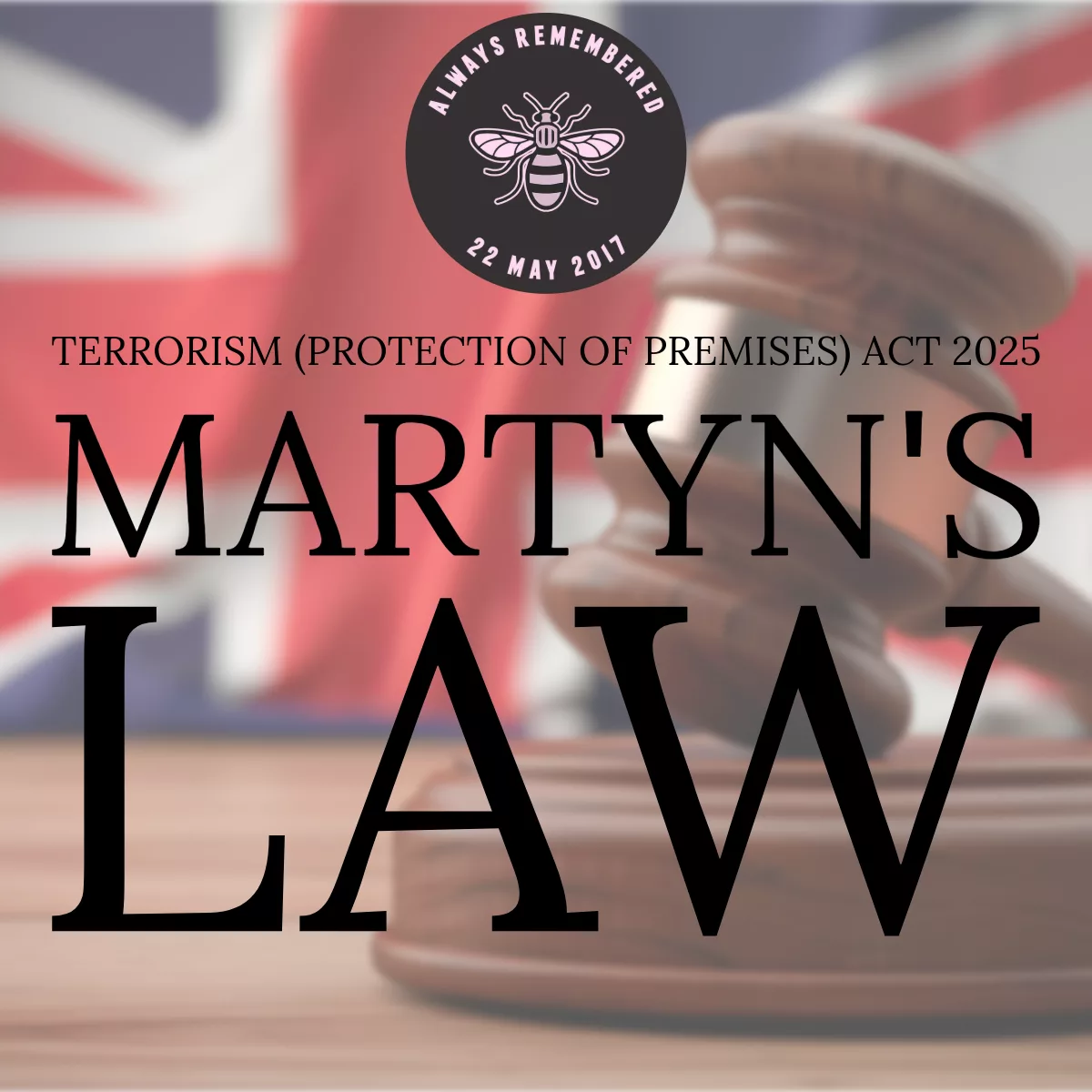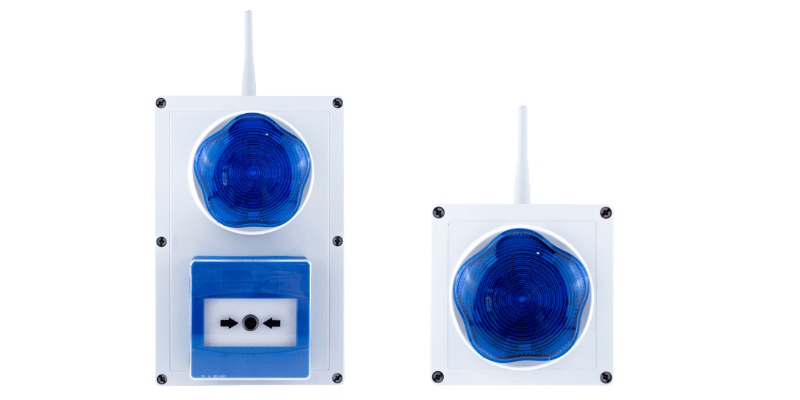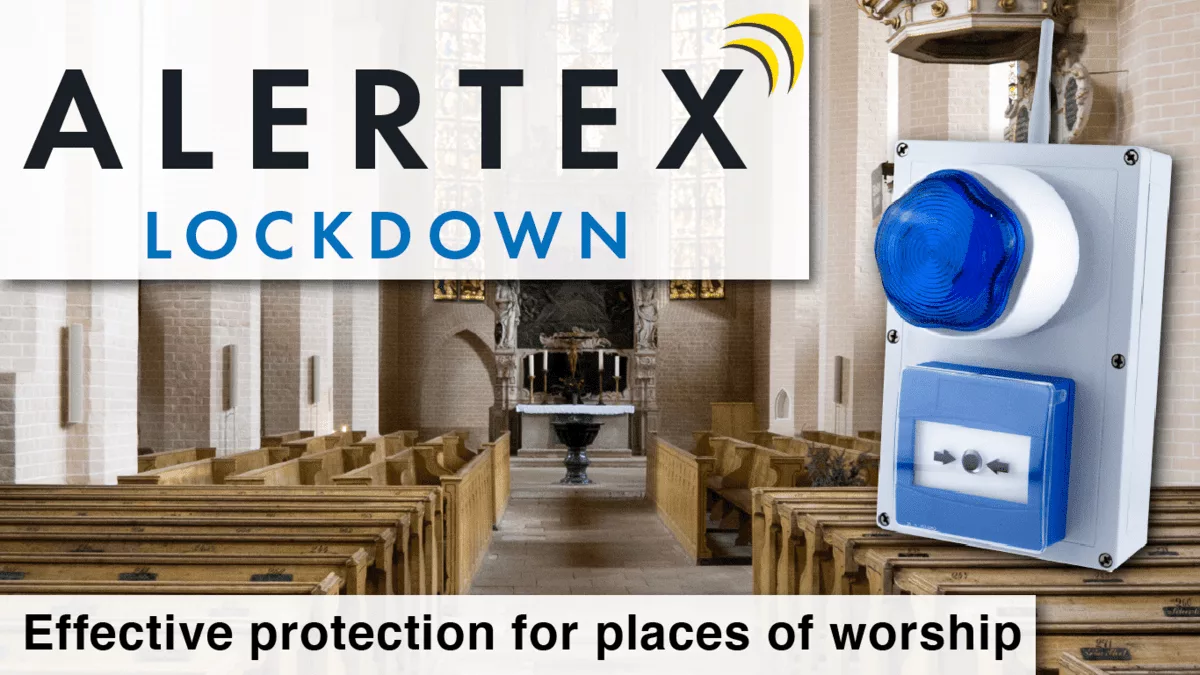
What is Martyn’s Law?
The Terrorism (Protection of Premises) Act 2025, otherwise known as Martyn’s Law, received Royal Assent on the 3rd of April 2025. There will be an implementation period of two years before the Act comes into force to enable premises to act on their new obligations. The purpose of Martyn’s Law is to provide a framework whereby premises with certain capacities are prepared for, and protected against, terrorist attacks to reduce their impact. The driving force behind the proposed legislation is Figen Murray, the mother of Martyn Hett who was tragically killed alongside 21 others in the Manchester Arena terrorist attack in 2017. Martyn’s Law legislation will apply across England, Wales, Scotland, and Northern Ireland.
The aim of Martyn’s Law is to improve the safety and security of public venues and keep the public safe from terrorism. The Law will ensure that public premises that reasonably expect 200 – 799 individuals to be present at the same time will be covered by the STANDARD TIER. Premises or events reasonably expecting 800 or more individuals to be present at the same time will be covered by the ENHANCED TIER. Apart from the capacity, premises that fall within the scope of the new legislation must be accessible to the public and used for a purpose listed in the Act such as entertainment, retail, leisure etc. so will include music venues, theatres, and department stores. Provision has been made for temporary event spaces such as festivals.
A Government Regulator will be established through a new function of the Security Industry Authority (SIA). Refer factsheet here.
Requirements:
STANDARD TIER
There were several concerns raised during consultations under the last Government with an emphasis on avoiding undue burdens on smaller premises whilst ensuring public protection. Premises within the standard tier will be required to have in place appropriate and reasonably practicable public protection procedures to reduce the risk of physical harm in the event of an attack. Venues that fall into the standard tier must notify the Regulator they have become responsible for premises within the scope of the Act.
Broadly, it is not expected that physical alterations be undertaken at standard tier premises however, workers will need to be sufficiently instructed or trained to conduct procedural measures effectively. It should be noted that all schools and places of worship will be placed within the Standard Tier regardless of their capacity.
IMPACT ON SCHOOLS
All schools, irrespective of their capacity, will fall under the STANDARD TIER. During the two-year implementation period schools will be advised to take reasonable steps to improve their preparedness for potential threats. Schools should be reviewing their current arrangements via enhanced security risk assessments and training, with an emphasis on those risks from terrorism. They should be undertaking a terrorism risk assessment, a draft evaluation of which has been published by the Home Office Draft your evaluation.
A natural area for review will be the school’s lockdown procedure. We know that a school’s lockdown alert must sound distinctive to the fire alert, as one means stay on the premises and find a place of safety whilst the other is to evacuate. To solidify their processes, the draft terrorism risk assessment asks how people on the premises will be informed that it has locked down and that they should not attempt to leave due to a threat outside.
Schools may therefore wish to introduce a quickly identifiable audible and/or visual alert system as part of their preparedness. At the very least schools should be reviewing their current emergency plans and seeking security advice.
Compliance with Martyn’s Law is likely to form part of the Ofsted inspection process and failure to comply may lead to improvement notices being issued.
It should be noted that whilst all schools, irrespective of capacity will fall under standard tier regulations, higher education premises will be assessed according to capacity as they are generally more openly accessible to members of the public and are more frequently used for events.
ENHANCED TIER
Larger venues must notify the Regulator of their event. They must ensure they take ‘reasonably practicable’ measures to reduce the risk of a terrorist attack occurring or physical harm being caused. They must keep and maintain a security document, aided by an assessment of the terrorism risk. They must also assign a designated senior individual for the premise or event to oversee and ensure compliance with the additional requirements.
Fines for non-compliance are expected to be up to £10,000 for Standard Tier premises and up to £18 million or 5% of global company revenue for Enhanced Tier premises.
The Regulator will monitor compliance and advise premises within the scope of the Bill. Measures to address non-compliance and full monetary sanctions are yet to be announced.
Click here to check out Luminite’s Alertex Range!





